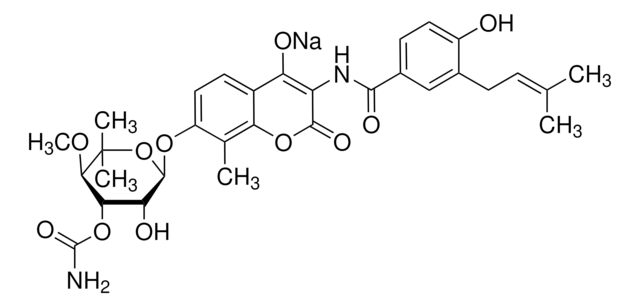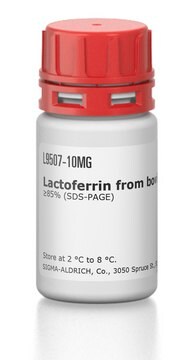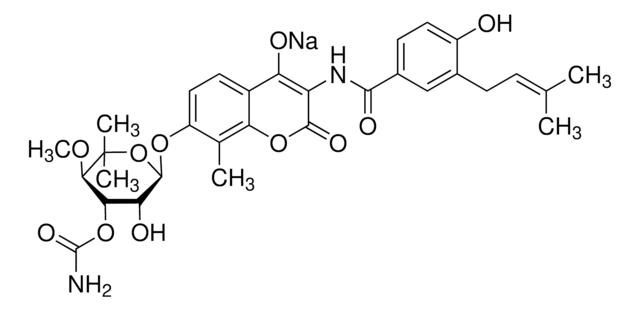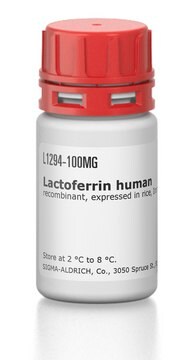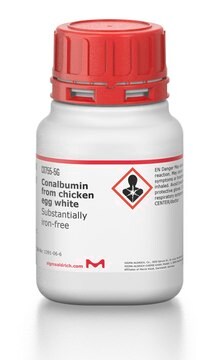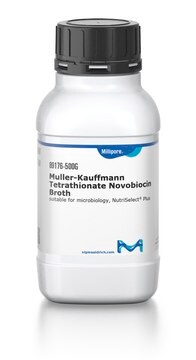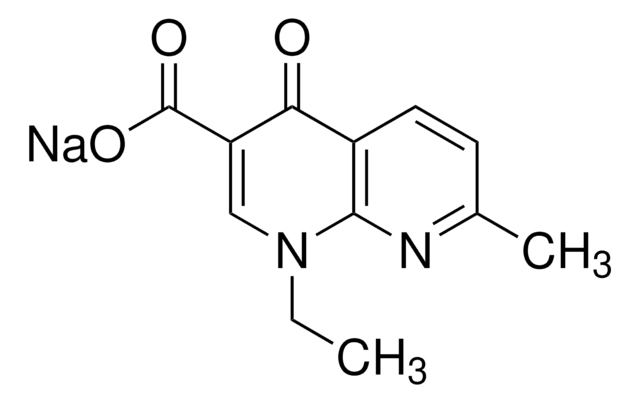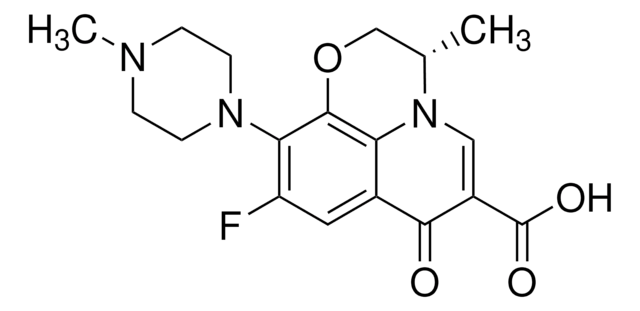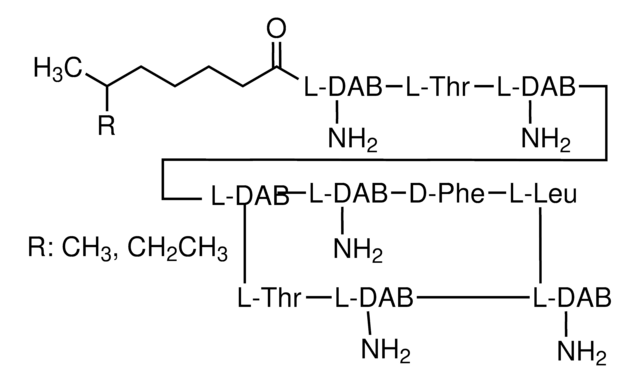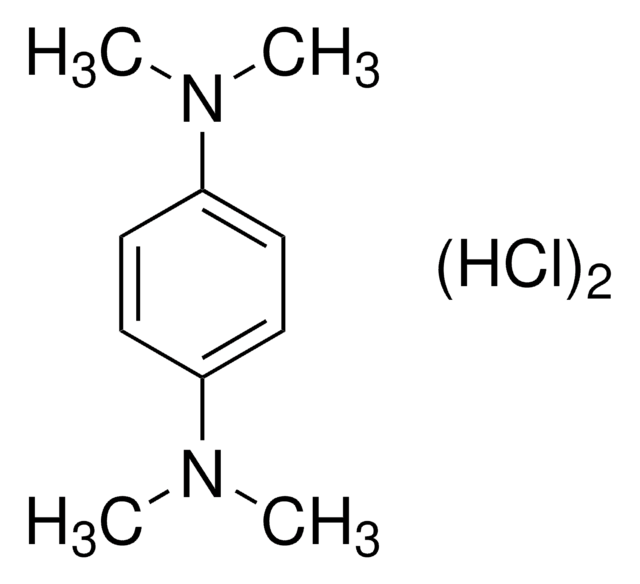N6160
Novobiocin sodium
meets USP testing specifications
Synonym(s):
Novobiocin sodium salt
About This Item
Recommended Products
Agency
USP/NF
meets USP testing specifications
Quality Level
form
powder
antibiotic activity spectrum
Gram-positive bacteria
application(s)
pharmaceutical (small molecule)
Mode of action
DNA synthesis | interferes
enzyme | inhibits
storage temp.
2-8°C
SMILES string
[Na+].CO[C@@H]1[C@@H](OC(N)=O)[C@@H](O)[C@H](Oc2ccc3C([O-])=C(NC(=O)c4ccc(O)c(C\C=C(\C)C)c4)C(=O)Oc3c2C)OC1(C)C
InChI
1S/C31H35N2O11.Na/c1-14(2)7-8-16-13-17(9-11-19(16)34)27(37)33-21-22(35)18-10-12-20(15(3)24(18)42-28(21)38)41-29-23(36)25(43-30(32)39)26(40-6)31(4,5)44-29;/h7,9-13,23,25-26,29,34,36H,8H2,1-6H3,(H2,32,39)(H,33,37);/q-1;+1
InChI key
AXOUUAINTJNFRS-UHFFFAOYSA-N
Looking for similar products? Visit Product Comparison Guide
General description
Application
Biochem/physiol Actions
Antimicrobial spectrum: Gram-positive bacterial.
Other Notes
Signal Word
Warning
Hazard Statements
Precautionary Statements
Hazard Classifications
Acute Tox. 4 Oral - Eye Irrit. 2 - Skin Sens. 1
Storage Class Code
11 - Combustible Solids
WGK
WGK 1
Flash Point(F)
Not applicable
Flash Point(C)
Not applicable
Personal Protective Equipment
Choose from one of the most recent versions:
Already Own This Product?
Find documentation for the products that you have recently purchased in the Document Library.
Customers Also Viewed
Protocols
Specifies a horizontal method for the detection of Salmonella spp. in the food production chain.
Our team of scientists has experience in all areas of research including Life Science, Material Science, Chemical Synthesis, Chromatography, Analytical and many others.
Contact Technical Service